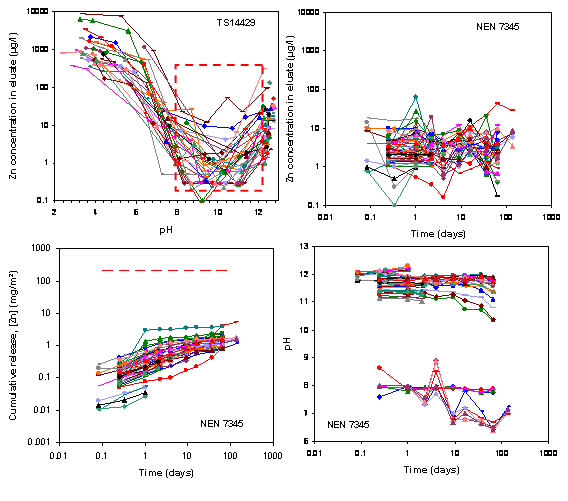Integrated data representation for monolithic materials
 |
For the release from monolithic materials or granular materials behaving as monolithic materials in the scenario considered, the presentation of release expressed in mg/m2 as a function of time is the most suitable form of data presentation.
In parallel the chemical speciation as reflected by the pH dependence test provides information on changes in exposure conditions or changes in material behaviour.
The combined methods are applicable to a wide range of materials such as bricks, stabilized waste, concrete, asphalt, tiles, metal sheeting and preserved wood. Release parameters can be derived to predict long-term behaviour.
In the figure the release of Zn from cement mortars from widely different origin is given as a function of pH (crushed material) and in a tank leach test, for which the pH may as dictated by the material itself (pH about 12) or imposed natural pH (pH 7-8) by external conditions (such as surface water or groundwater).
The box in the left hand top graph reflects the relevant pH domain for the life cycle of a mortar (pH range 12.5 - 7.8 , full carbonation)
In comparison with regulatory criteria (Building Materials Decree 1995) for granular materials (top left hand graph) and cumulative release as a function of time (same regulation) Zn is in all mortars well below any critical limit (even after carbonation).